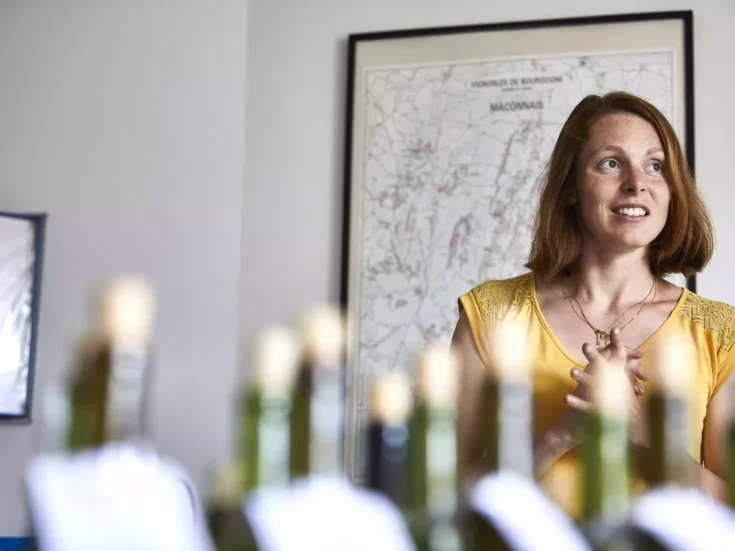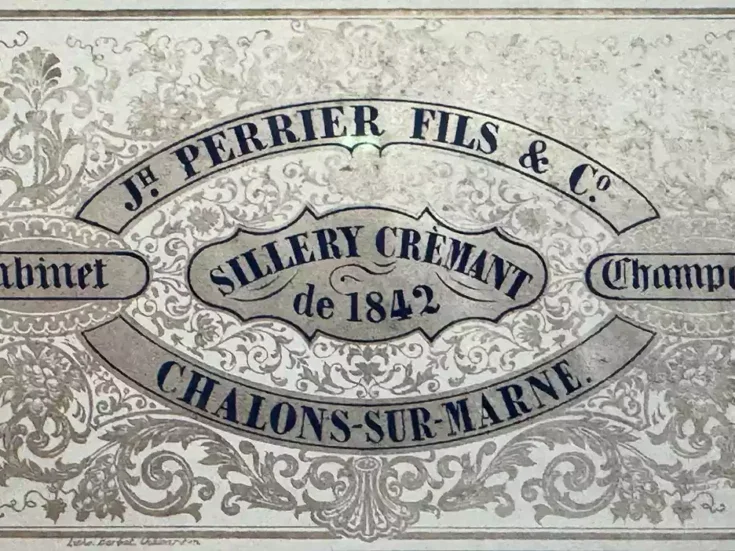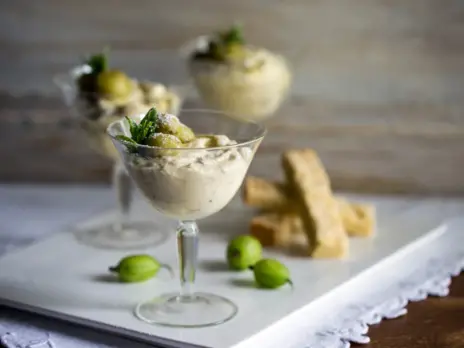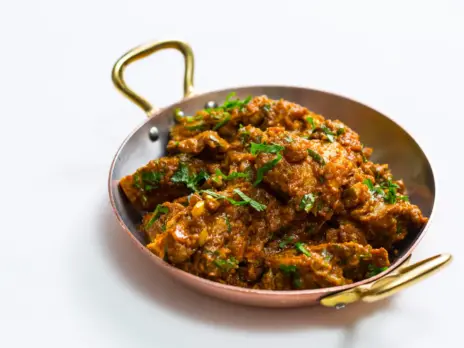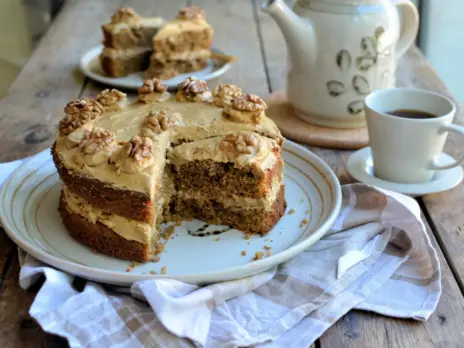
Despite the lower rainfall in St-Estèphe during the growing season compared with its neighboring communes, the wines from this appellation show much less consistency than the wines from Pauillac. This is not surprising in this wet vintage, given the more heterogeneous soil composition across the appellation—the varied gravel deposits and higher water retention from the greater amount of clay content in the subsoil.
The 30 wines I tasted from St-Estèphe are highly variable in quality, some too tannic and tough, others thin and hollow. This is a vintage in which to follow the producer, and some producers made exceptional wines across their range—from the grand vin, to its second wine and others.
Note: The ratings given here are provisional, since they represent the evaluation of unfinished wines tasted as barrel samples, not the final wines.
ST-ESTÈPHE
Château Cos d’Estournel 2ème Cru
(60% Cabernet Sauvignon, 38% Merlot, 1.5% Cabernet Franc, 0.5% Petit Verdot)
Leave behind the image of Cos from the early 2000s, where power, bulk, and concentration were among its defining features—the pendulum has swung the other way with the 2024 vintage. There is reasonable, considered depth of flavor balanced by firm but supple tannins, with medium weight and a freshness and lightness that reflect this vintage. The nose and palate are expressive, with a mix of crunchy red and black berries mingling with hints of savory herbs, pepper, and graphite. This is a meticulously crafted Cos that has finesse and a finish that extends admirably. I would also recommend the gorgeous, intense Cos d’Estournel Blanc and the well-crafted Les Pagodes de Cos—both the red and the white—which are brilliant. 2032–52. 94
Château Montrose 2ème Cru
(80% Cabernet Sauvignon, 17% Merlot, 3% Cabernet Franc)
The 2024 Montrose stands as a magnificent achievement, displaying remarkable depth and concentration balanced with finesse and impeccably refined, firm tannins. The flavor profile unfolds in layers of crunchy, fresh black and red berries accented with green capsicum, cedar, and earth. This vintage features the highest proportion of Cabernet Sauvignon (80%) ever used in Montrose’s history—and the results are tremendous. The wine is majestic and deep, with only 13% ABV. This vintage of Montrose represents St-Estèphe at its finest in 2024 and this is my top choice from this appellation. Montrose’s Terrasse III and La Dame de Montrose are also very successful in this vintage, so I would highly recommend both of those, too. 2034–54. 95
Château Phélan Ségur
(68% Cabernet Sauvignon, 30% Merlot, 2% Petit Verdot)
There is an honesty and purity about Phélan Ségur, which is very charming in this vintage. The structure is firm, quite St-Estèphe in stature, but without the toughness or astringency, and the wine is approachable young. The flavors are lifted and clean, with well-defined cassis, graphite, and spices on both the nose and the palate. There is clarity and early approachability to the expression, offering nice depth without excess weight. This is a solid and confidently made Phélan Ségur that will have broad appeal. 2031–40. 91
ST-JULIEN
The 25 St-Julien wines I tasted were more consistent than those from St-Estèphe, and while I am happy to recommend many of the top producers from this appellation, there were also some disappointments. Among the latter was Château Saint-Pierre, which I admire and enjoy in many vintages, but which made an extracted 2024 (trying to overcome the vintage rather than working with it), complete with chunky flavors and chewy tannins; Château Talbot, another favorite of mine, was forward and quite simple, approachable but hollow on the mid-palate. Many of the less successful wines were either unbalanced and extracted or thin and uninspiring. There were, however, just as many delightful wines that made the most of the vintage. In addition to the wines below, I would also recommend seeking out the admirable Château Beychevelle, Château Langoa Barton, and Clos du Marquis.
Château Branaire-Ducru 4ème Cru
(72% Cabernet Sauvignon, 22% Merlot, 3.5% Cabernet Franc, 2.5% Petit Verdot)
It is the freshness and effortless balance that I enjoy about Branaire-Ducru in this vintage. The flavors have purity and precision—crunchy blackberries, red plums, and pepper, which are in harmony with supple, elegant tannins. The wine is poised, with clean lines and wonderful tension. It is an accessible wine even young, but the length and structure suggest that it will age well over the coming few decades. 2031–48. 93
Château Ducru-Beaucaillou 2ème Cru
(86% Cabernet Sauvignon, 14% Merlot)
This wine is surprisingly concentrated and intense, with deep color and a bold but suave tannic structure. In 2024, Ducru-Beaucaillou deftly walks the fine line between extracting flavors and tannins to create an ample mid-palate, and respecting the vintage expression of grace and lightness. There is lovely purity in the layers of flavor, which include violet, black plum, and sandalwood. The wonderful balance, energy, and tension in the wine, all the way through to the long finish, suggest it will age beautifully over the coming few decades. 2033–50. 93
Château Léoville Barton 2ème Cru
(92% Cabernet Sauvignon, 6% Merlot, 2% Cabernet Franc)
The 2024 is a classical and restrained expression of Léoville Barton—the wine is simply charming and true to the vintage. There is an honesty to the wine, with its clarity of flavors and firm, fine-grained tannins. The palate offers cigar box, graphite, cassis, and plums, which unfold gently with poise and grace. This is a classic Léoville Barton that speaks with precision and refinement. 2032–50. 93
Château Léoville Las Cases 2ème Cru
(84% Cabernet Sauvignon, 11% Cabernet Franc, 5% Merlot)
Deep, dark, and intense, the 2024 Léoville Las Cases triumphs in this tricky vintage. The elevated, suave tannins embody the classic amplitude expected from Las Cases, framing mixed blackberries, plums, tobacco, and crushed stones. There is no lack of concentration or intensity here; in fact, there is very little evidence of the difficult vintage. The shape, stature, and depth are classic Las Cases from a solid vintage, with 13.1% ABV and 75% new barrels, where it will age for 18 months. All the parameters, including its structure and flavor, are in line with a very good vintage. Through careful selection and sorting, Las Cases has set the benchmark for the commune in 2024. This is my top St-Julien of the vintage, but the entire portfolio of wines from the Delon family is superb in 2024. 2034–52. 94
Chateau Léoville Poyferré 2ème Cru
This is a bold and modern expression of the vintage, quite dense and richly extracted but with a velvety texture. The tannins are ripe and round, providing ample weight on the mid-palate, which balances flavors ranging from ripe plum and black cherry, to tobacco and cedar. Léoville Poyferré is fairly dense in this light vintage, but it is polished and well-crafted, with balance and good definition of flavor. 2032–47. 92
Jeannie Cho Lee MW on Bordeaux 2024
Bordeaux 2024: An opportunity for relevance?
Bordeaux 2024: Pauillac recommended wines

